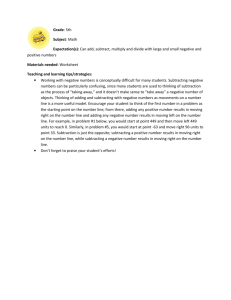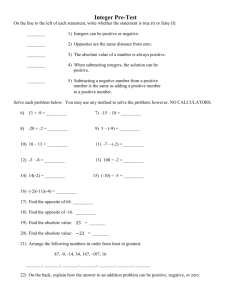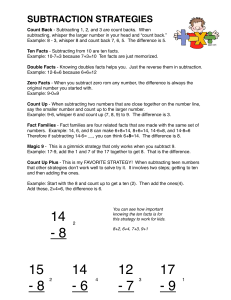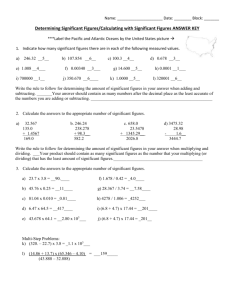Subtraction Strategies - RightStart™ Mathematics by Activities for
advertisement
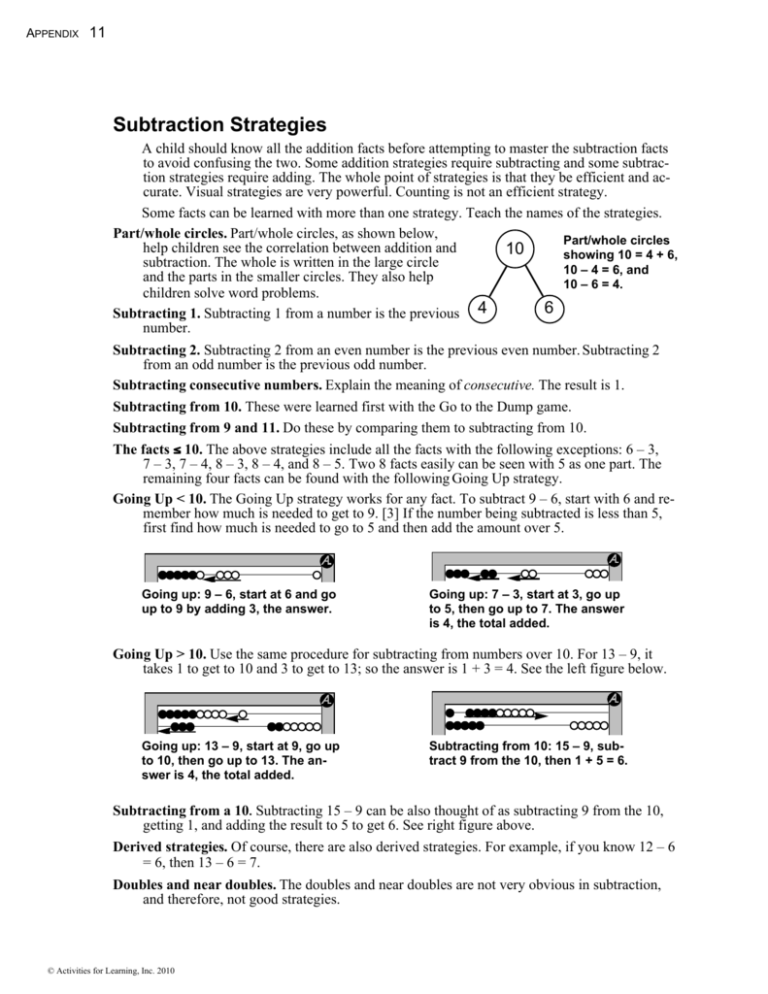
APPENDIX 11 Subtraction Strategies A child should know all the addition facts before attempting to master the subtraction facts to avoid confusing the two. Some addition strategies require subtracting and some subtraction strategies require adding. The whole point of strategies is that they be efficient and accurate. Visual strategies are very powerful. Counting is not an efficient strategy. Some facts can be learned with more than one strategy. Teach the names of the strategies. Part/whole circles. Part/whole circles, as shown below, Part/whole circles help children see the correlation between addition and 10 showing 10 = 4 + 6, subtraction. The whole is written in the large circle 10 – 4 = 6, and and the parts in the smaller circles. They also help 10 – 6 = 4. children solve word problems. 6 Subtracting 1. Subtracting 1 from a number is the previous 4 number. Subtracting 2. Subtracting 2 from an even number is the previous even number. Subtracting 2 from an odd number is the previous odd number. Subtracting consecutive numbers. Explain the meaning of consecutive. The result is 1. Subtracting from 10. These were learned first with the Go to the Dump game. Subtracting from 9 and 11. Do these by comparing them to subtracting from 10. The facts ≤ 10. The above strategies include all the facts with the following exceptions: 6 – 3, 7 – 3, 7 – 4, 8 – 3, 8 – 4, and 8 – 5. Two 8 facts easily can be seen with 5 as one part. The remaining four facts can be found with the following Going Up strategy. Going Up < 10. The Going Up strategy works for any fact. To subtract 9 – 6, start with 6 and remember how much is needed to get to 9. [3] If the number being subtracted is less than 5, first find how much is needed to go to 5 and then add the amount over 5. Going up: 9 – 6, start at 6 and go up to 9 by adding 3, the answer. Going up: 7 – 3, start at 3, go up to 5, then go up to 7. The answer is 4, the total added. Going Up > 10. Use the same procedure for subtracting from numbers over 10. For 13 – 9, it takes 1 to get to 10 and 3 to get to 13; so the answer is 1 + 3 = 4. See the left figure below. Going up: 13 – 9, start at 9, go up to 10, then go up to 13. The answer is 4, the total added. Subtracting from 10: 15 – 9, subtract 9 from the 10, then 1 + 5 = 6. Subtracting from a 10. Subtracting 15 – 9 can be also thought of as subtracting 9 from the 10, getting 1, and adding the result to 5 to get 6. See right figure above. Derived strategies. Of course, there are also derived strategies. For example, if you know 12 – 6 = 6, then 13 – 6 = 7. Doubles and near doubles. The doubles and near doubles are not very obvious in subtraction, and therefore, not good strategies. © Activities for Learning, Inc. 2010
